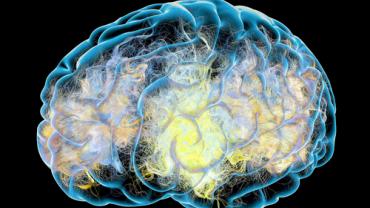
Four primary neurotransmitters – dopamine, GABA, serotonin, and acetylcholine – harmoniously flow through the millions of communication pathways in our brains, much like the parts of a musical score. Each part plays its individual role, but together, a unique song is expressed through everyone’s unique personality, mood, behaviors, and cognitive strengths and weaknesses. There is no question that everyone must maintain a general balance between the primary neurotransmitters in the same way a musical masterpiece must communicate a balance of its parts, and yet, each person’s balance is just as individual as our external characteristics.
As practitioners, understanding the interplay between the neurotransmitters is not only important for stabilizing moods and boosting memory, but it may be plausible to consider how neurotransmitters act upon dietary behavior, stress management, and other aspects of health maintenance.
When Dopamine Dominates
Dopamine is the predominant neurotransmitter of the prefrontal cortex, where it drives behavior, personality, and executive planning and decision-making. In some individuals, it takes precedence over the other neurotransmitters and literally, drives. Individuals who naturally have more dopamine are characterized as analytical, fast-paced, thinkers, highly motivated, focused, and oftentimes, competitive. Dopamine causes us to seek rewards at any cost. It helps drive us to takes risks and never looks back. Dopamine creates the strong-willed, self-confident personalities and the “go-getters.”
Dopamine is also the electrical current of the mesolimbic “reward” pathway and has received a lot of attention for its potential role in addictions. Dopamine is released and travels this path in anticipation of a pleasurable experience and increases the perception of pleasure. It functions to increase incentive and motivation and control impulses. This pathway is easily triggered by sugar and high carb foods, alcohol, caffeine, drugs, money, sex, gambling or gaming, and any personal pleasurable activity such as watching a favorite sports team win, holding a newborn infant, or listening to music. When dopamine travels down this pathway, pleasurable feelings soar and reinforce the behavior.
When Dopamine Destroys Health
Individuals who have a higher-than-average dopamine (or are considered dopamine dominant) may have a harder time sticking to dietary restrictions, conquering chronic stress without “burning out,” and may be at risk for certain health problems including:
Dopamine dominant individuals may have a harder time eliminating stimulating foods such as sugars, diet sodas sweetened with artificial sweeteners, chocolate, caffeinated beverages, and high starch foods like potatoes and processed grains. When dopamine dominant individuals must make dietary changes to eliminate gastrointestinal infections, reduce inflammation, or control allergies, they may find it difficult and experience far more cravings than others. As practitioners, recognizing dopamine’s role in food preferences and addictions can be vital in helping someone successfully transition to a healthier diet, without giving up in frustration.
Dopamine dominant people must also be aware of the necessity for stress management. Dopamine will initially fuel them through stress, but if they overcommit, become a workaholic, and eventually lose close relationships, they will experience the “crash and burn” when their dopamine reserves are spent. Dopamine is wonderful for motivating vision, invention, and success, but the “gift” must be balanced with routine stress management so it can keep on giving.
Naturally Lowering Dopamine – What to Consider
Check Genetics: Individuals with naturally high dopamine often have COMT or MAO mutations. These genes encode for enzymes that degrade dopamine. Further, methylation is often impaired by COMT mutations, so it may be helpful to check the common methylations genes (MTHFR). Urinary monoamine metabolites – Homovanillic acid (HVA), 5-hydroxyindoleacetic acid (5-HIAA) and 3-methoxy-4-hydroxyphenylglycol (MHPG) – can also confirm imbalanced dopamine, serotonin, and norepinephrine metabolism, respectively.
Supply Cofactors: Vitamin C and copper are required to convert dopamine into norephinephrine, which is then converted into epinephrine using SAMe and magnesium. If any of these cofactors are lacking, the compounds back up and dopamine rises.
Avoid Dietary Stimulants: Sugar, caffeine, chocolate, artificial sweeteners and high starch foods such as potatoes stimulate dopamine release. The more these foods are consumed, the more dopamine dominant individuals crave them. Complete elimination is sometimes necessary to retrain the limbic system to respond to these stimulants in a more balanced manner.
Serotonin: Serotonin works like an antagonist to dopamine. 5-HTP and L-tryptophan are both precursors to serotonin. Melatonin is made from serotonin and can be useful in achieving a good night’s sleep, which will help balance neurotransmitters.
GABA (Gamma-aminobutyric acid): A wonderful calming, inhibitory neurotransmitter, increasing GABA will help balance dopamine.
By Nicole Spear, MS, CNS